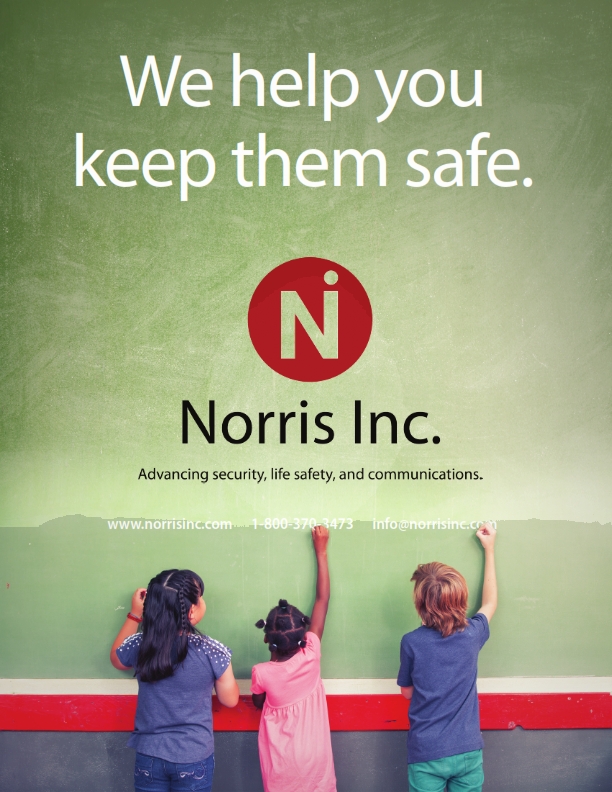Norris is no stranger to that direst and most difficult of life-safety and security missions–securing our children where they spend their days learning.
At the one-year anniversary of the shooting at Marjory Stoneman Douglas High School in Parkland, Florida, Norris decided to make some useful suggestions.
In today’s world of increasing school shootings, there is a fine line between the zero-sum-game of security and convenience, between making our campuses of learning as secure as can be and making them feel like prisons.
Norris is honored to be the security provider for many Northern New England schools and has compiled a list of 10 things school administrators can do to make their schools more secure. Most of these measures can be employed with minimal cost.
- Change and enforce internal policies if needed. If there is an access control system in place, all personnel must use card reader-enabled doors. Develop procedures for communications in case of emergencies.
- Make sure public safety agencies have access to and are trained on existing systems.
- Keep doors closed. This includes classrooms. One should not be able to see students in the classrooms from the hall. Teachers should be able to secure classroom doors.
- Make sure the school has panic/lockdown buttons for duress situations. A silent panic button gets police response much more quickly than a 911 call.
- Strive to make the response faster, if possible, by other methods. For example, if dispatch has a video feed to the school, that feed can be integrated into the panic/lockdown button activation.
- Install low-cost prop alarms on perimeter doors. One could spend much more on door monitoring, but this usually requires live monitoring in the office. Audio alarms keep people from opening doors. It is usually school personnel that is opening and propping perimeter doors.
- Put video surveillance in place. Remember, video is not a “live” security system, except by public safety- and administrator-use during issues. Users need to be properly trained to use video effectively.
- Make sure office to classroom intercoms are tested and maintained.
- Use visitor sign-in/verification procedures.
- Communications. Most teachers and students have cell phones. Public safety may be best served to have an advertised solution–a department twitter/facebook site–where the students and/or teachers can start posting when an emergency transpires. This is probably the quickest way for an alert to get to first responders. Students are the best communicators in the school.
Please consider contacting Norris today to discuss how to begin making your school a safer place for our children to learn.



Leave A Comment